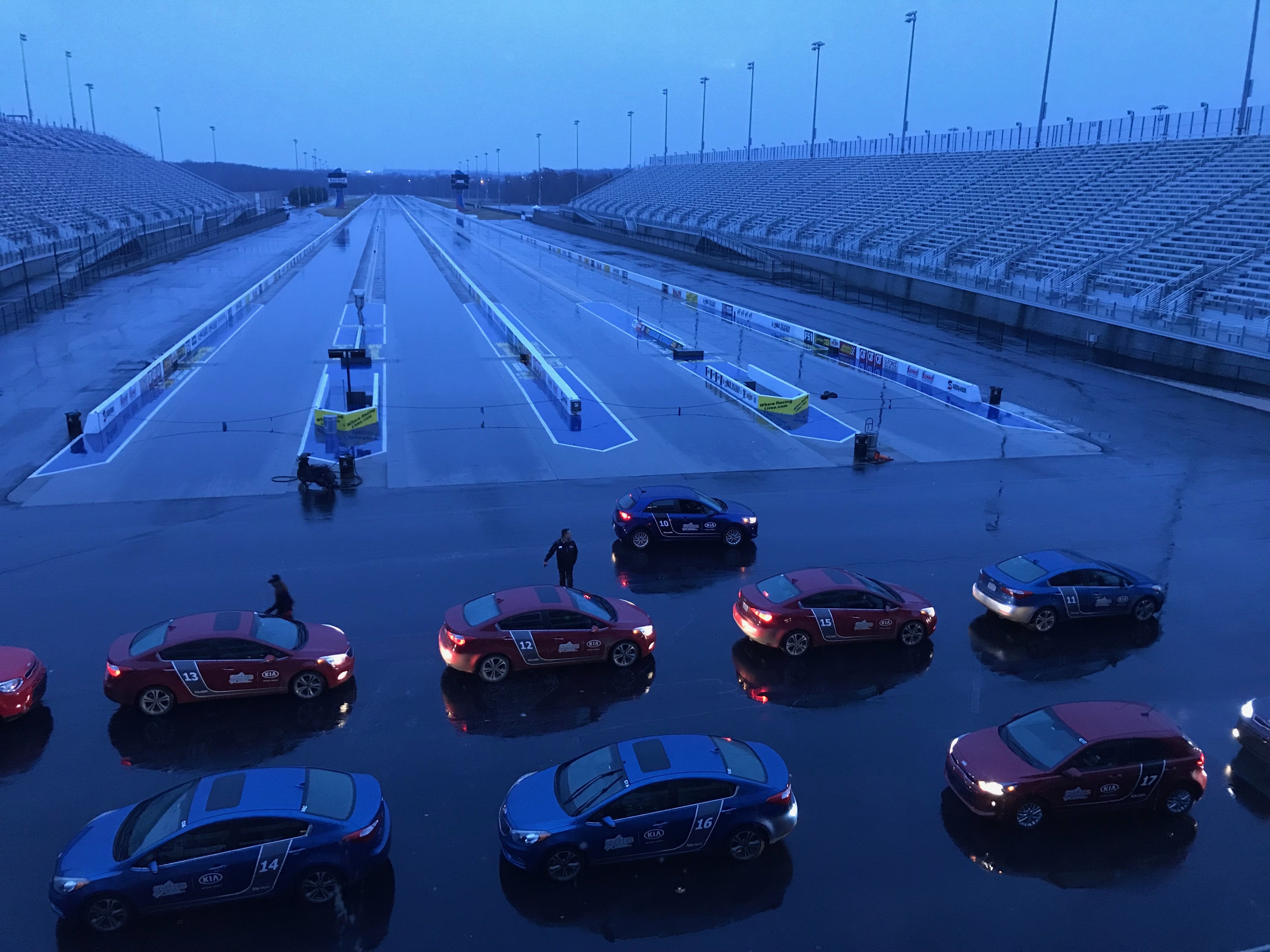According to the AAA Foundation for Traffic Safety, more teens die everyday in car crashes than cancer, homicide, and suicide. Does this fact surprise you? It definitely surprised me too, at first.
But the more I thought about it, the more it made sense. Everyday I watch students whip out of the student parking lot for lunch, weaving and cutting in lanes, flying over speed bumps, riding people’s bumpers–the list goes on.
The fact is, teens are dying everyday from car crashes and not many people are aware. Back in January 2008, NHRA drag racer Doug Herbert lost both of his sons in a devastating car accident. Ever since then, Doug has dedicated his life to running Put on the Brakes, a program dedicated to teaching children defensive driving, so no parents experience what he did.
Teens of any age (as long as they have their permit or license) can attend this class. They’re taught how to be defensive drivers and how to prepare in case of an event which could have lead to a crash.
Some courses included panic braking, where teens would step on the gas pedal — and at the very last minute when instructed to do so — slam on the brakes hard, in order to feel the Anti-Lock Braking System work. As the program mentions, slamming on your brakes does not in fact hurt your brakes and in case of an emergency, you should almost always slam on your brakes to avoid a crash.
Other courses which I found very helpful were the Distracted Driving course and Skid Recovery. It’s very easy to become a distracted driver; all you have to do is turn on some music or have a friend in the car talking to you. With Distracted Driving, you have all of these things at once: music blaring, “typing” on a calculator to mimic texting, and a friend next to you, poking and distracting.
Let me tell you, it was not easy to do. I already knew that I should never text and drive, but this section really made me realize the consequences of distracted driving, especially with the person in the passenger seat. If any of my friends are ever distracting me, I know that I just need to tell them to stop.
With Skid Recovery, students drove a normal car (without the traction on) and with plastic wheels as the two back tires to mimic slippery conditions such as in snow or ice. Teens must go around curves at a very low speed, but must still recover in order to avoid spinning out (which was very likely to happen).
I learned very quickly that if I didn’t turn my wheel back to the right, I would spin out which contrary to every action movie, is not that enjoyable. And although we don’t experience a ton of snow down in NC, we do have lots of ice in the winter and now I know I’ll be prepared for whatever comes.
When I first arrived at Put on the B.R.A.K.E.S, I was really nervous and didn’t want to be there. I knew in the end that I would benefit from taking the course, but I didn’t want to spend my whole Saturday driving a car.
But the more I drove and the more activities I participated in, the more fun I had. I drove with a couple of other girls from North Carolina, and it made the courses more fun.
Everyone needs to take this class. It doesn’t matter whether you have your permit or your license, anyone can take the class. According to a study done by Put on the B.R.A.K.E.S. , 64% of drivers who took Put on the B.R.A.K.E.S were less likely to get in a car crash to those who didn’t take the class.
The great thing about this course is that it’s free, although the program does recommend a donation as they are a non-profit organization. You can register for a course at https://putonthebrakes.org/.

Leave a Reply